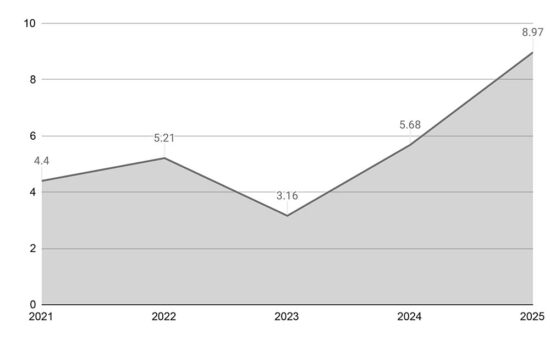Thukten Zangpo
The finance ministry projected Bhutan’s economy to grow at 5.68 percent this year, according to the ministry’s macroeconomic situation report for the second quarter for the fiscal year 2023-24.
For 2025, the ministry forecasted the economy to expand by 8.97 percent and 3.16 percent growth for 2023.
The economy is expected to show a strong growth trajectory because of the anticipated commissioning of the mega hydropower projects and heightened government spending in the 13th Plan.
This year, the earnings from the electricity sales are estimated at Nu 29.69 billion because of an additional energy generation of 491 million units from the commissioning of the Nikachhu.
By 2025, the commissioning of the Puna-II is expected to boost hydro energy sales earnings by 63 percent.
Hydropower is the primary source of foreign currency, accounting for nearly 36 percent of the total exports over the years and contributing approximately 27 percent to the domestic revenue.

The ministry said that the gross earnings from the hydropower energy sales amounted to Nu 25.17 billion last year, down by 10 percent from the previous year.
The export earnings, however, declined to Nu 16.9 billion in 2022 while earnings from the domestic sales increased to Nu 8.27 billion because of higher domestic energy demand.
However, there are looming risks to the growth outlook from the interplay of commodity price and financial market volatility, tight labour market, and imbalances in the external sector, the ministry said.
Out of the estimated total budget of Nu 512.48 billion for the 13th Plan, Nu 250 billion is allocated for capital, while Nu 262.48 billion is designated for current expenditure.
Notably, the 13th Plan’s budget stands at 30 percent higher than the 12th Plan’s budget of Nu 394.84 billion. Last year, the finance ministry estimated the economy to grow by 3.16 percent.
The growth from agriculture is estimated at 1.83 percent in the same year, contributing to the overall 0.24 percent of the overall growth. The agricultural growth is expected to be driven by crop and livestock production, with respective growth rates of 1.81 percent and 2.76 percent respectively.
The forestry and logging sector, however, is expected to experience a slight decline by 0.16 percent, according to the ministry.
The industry sector’s growth is expected to decline by 8.42 percent. The sector contributes to 2.71 percent of the overall growth. The negative growth is attributed to a decrease in the electricity and construction sectors by 8.32 percent and 18.07 percent, respectively.
This downturn, experts say, is due to reduced government and hydropower construction spending and lower hydropower generation. The mining and quarrying, and manufacturing sectors are expected to exhibit a growth of 7.87 percent and 4.54 percent respectively.
The service sector is expected to grow at 10.52 percent. Likewise, the wholesale and retail trade is estimated to grow by 9.07 percent, transport and storage by 16.88 percent, hotel and restaurants by 14.29 percent, and public administration by 15.08 percent.


